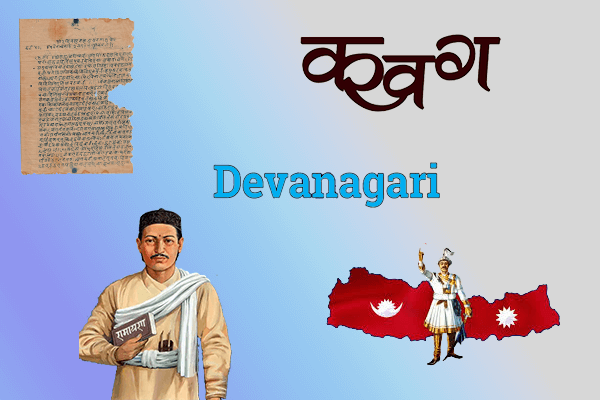A Brief History of Nepali Language
Nepali language belongs to the Indo- European language family and dates back to almost 981 A.D. According to the collections in Panch Saya Barsa edited by Prof. Balkrishna Pokharel oldest written text availed yet is of 981 AD; Bhupal Damu Pal’s stone-manuscript .The language is said to have originated from a now extinct language called “Khas Kura”. As per the insights “Khas Kura” is primarily Indo-Iranian but some scholars argue on the basis of gene movement in history that the current Nepali language might have originated from Tibeto-Burman Kham kura spoken in the Kham region of Tibet.

Khas Kura was spoken in the Khas Empire and after the end of the Khas Empire around the 13th century, people started migrating eastward and spreading the language. Then in the early 18th century, Gorkha King Prithvi Narayan Shah united the fragmented states of Nepal and built a single country which is known as “Nepal” today. After unification, the language of the Gorkha kings became the official language of the country.
Even though Khas language was spreading in its own way, the unification by Prithvi Narayan and the successive Gorkha kings made Khas kura /Gorkha language flourish throughout the country. With the growth of linguistic nationalism, the name “Nepali ’’ became popular and the language spread within and outside the country as well. Today it is recognized as one of the 23 official languages of India and is widely spoken in the states of Sikkim and West Bengal. Nepali is also spoken in some parts of Bhutan and Myanmar.
Nepali language includes three regional dialect groups: the western, the central, and the eastern. There is also one distinct dialect which is used by the Royal Family. Nepali language has a rich history of oral literature and written literature and like Hindi and Sanskrit, it is written in the Devanagari script.
Before the Gorkha conquest of Nepal, the writings used to be on Sanskrit and Newari as well as Gorkha language. These writings consisted of religious texts, chronicles, gift deeds and so on. Later in the 18th century after Nepali was declared as the official language, literature started prospering in Nepali language. In the mid-century, Bhanubhakta wrote a Nepali version of the Hindu epic “Ramayana” which was first written in Sanskrit language. The Nepali version achieved great popularity for the flavor of its language and religious sincerity. Then in early 20th century Lekhnath Paudyal presented Nepali literature with complex poetry rich in traditional philosophy but in a simple way.
Later poets like Balkrishna Sama and his great contemporary Laxmi Prasad Devkota took Nepali literature to new heights. Sama and Devkota discarded the Sanskrit dominated literature and adopted some of the works of the West like tragic drama, short stories and epic poems. While Sama wrote about the social injustice, nationalism and culture; Devkota started a modern Nepali language romantic movement in the country. Devkota being inspired from the Newar language (a Sino-Tibetan language) ballad song Ji Waya La Lachhi Maduni, wrote Muna Madan in 1930 which is the highest selling book in the history of Nepali literature.